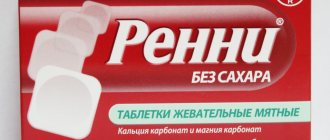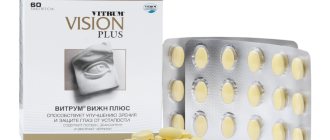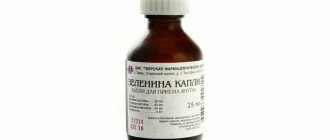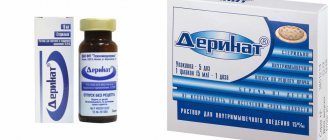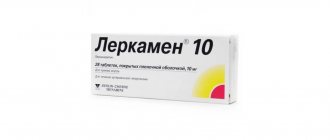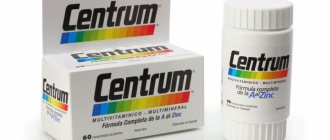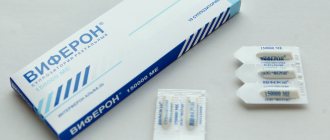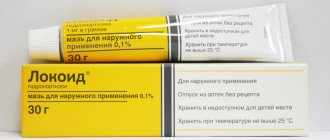The formation of blood clots (thrombi) can lead to very dangerous consequences, including death. Patients suffering from various diseases of the cardiovascular system are at risk. To avoid serious risks, it is necessary to use drugs to prevent blood clots, for example, Clopidogrel. The product is highly effective; almost all reviews about it are positive.
Tablets "Clopidogrel" description
The product is available in the form of tablets, which contain the active ingredient of the same name in the form of sulfate (75 mg per piece). It is also called clopidogrel. Additional substances - silicon dioxide, lactose in the form of monohydrate and others. Tablets are produced in different packages of 7, 10, 14 or 28 pieces.
The drug has an antiplatelet effect. The active component prevents platelets from sticking together. Clopidogrel is quickly absorbed from the intestine. Excreted in feces and urine in a ratio of approximately 1:1. Half the dose is eliminated within 8 hours.
The product is stored under normal room conditions at temperatures up to 25 degrees. The place should be dark, the humidity should be moderate. Access for children is prohibited. The general shelf life is 3 years from the date of production.
Clopidogrel-SZ, 75 mg, film-coated tablets, 30 pcs.
Pharmacotherapeutic group: antiplatelet agent.
ATX code: [B01AC04]
PHARMACOLOGICAL PROPERTIES
Pharmacodynamics
Clopidogrel is a prodrug, one of the active metabolites of which is an inhibitor of platelet aggregation. The active metabolite of clopidogrel selectively inhibits the binding of adenosine diphosphate (ADP) to the P2Y12 platelet receptor and subsequent ADP-mediated activation of the GPIIb/IIIa complex, leading to suppression of platelet aggregation. Due to irreversible binding, platelets remain immune to ADP stimulation for the remainder of their life (approximately 7-10 days), and restoration of normal platelet function occurs at a rate consistent with platelet turnover. Platelet aggregation induced by agonists other than ADP is also inhibited by blocking enhanced platelet activation by released ADP. Since the formation of the active metabolite occurs with the help of isoenzymes of the P450 system, some of which may differ in polymorphism or may be inhibited by other drugs, adequate platelet suppression is not possible in all patients. Clopidogrel is able to prevent the development of atherothrombosis in any localization of atherosclerotic vascular lesions, in particular in lesions of the cerebral, coronary or peripheral arteries.
When taking clopidogrel daily at a dose of 75 mg, from the first day of administration there is a significant suppression of ADP-induced platelet aggregation, which gradually increases over 3-7 days and then reaches a constant level (when an equilibrium state is reached). At steady state, platelet aggregation is suppressed by an average of 40-60%. After discontinuation of clopidogrel, platelet aggregation and bleeding time gradually returned to baseline levels within an average of 5 days.
Pharmacokinetics
Suction
When administered orally at a dose of 75 mg per day, clopidogrel is rapidly absorbed. Average maximum plasma concentrations of unchanged clopidogrel (approximately 2.2-2.5 ng/ml after oral administration of a single 75 mg dose) are achieved approximately 45 minutes after administration. According to the excretion of clopidogrel metabolites by the kidneys, its absorption is approximately 50%.
Distribution
In vitro, clopidogrel and its main inactive metabolite circulating in the blood are reversibly bound to plasma proteins (98% and 94%, respectively) and this binding is unsaturated up to a concentration of 100 mg/l.
Metabolism
Clopidogrel is extensively metabolized in the liver. In vitro and in vivo, clopidogrel is metabolized in two ways: the first - through enzymes and subsequent hydrolysis with the formation of an inactive carboxylic acid derivative (85% of circulating metabolites), and the second way - through the cytochrome P450 system. Initially, clopidogrel is metabolized to 2-oxo-clopidogrel, which is an intermediate metabolite. Subsequent metabolism of 2-oxo-clopidogrel leads to the formation of the active metabolite of clopidogrel, a thiol derivative of clopidogrel. In vitro, this metabolic pathway occurs through the isoenzymes CYP2CI9, CYP1A2 and CYP2B6. The active thiol metabolite of clopidogrel, which was isolated in in vitro studies, rapidly and irreversibly binds to platelet receptors, thereby blocking platelet aggregation.
Removal
Within 120 hours after human ingestion of 14C-labeled clopidogrel, approximately 50% of the radioactivity is excreted by the kidneys and approximately 46% of the radioactivity is excreted through the intestines. After a single oral dose of 75 mg, the half-life of clopidogrel is approximately 6 hours. After a single dose and repeated doses, the half-life of the main inactive metabolite circulating in the blood is 8 hours.
Pharmacogenetics
With the help of the CYP2C19 isoenzyme, both the active metabolite and the intermediate metabolite, 2-oxo-clopidogrel, are formed. The pharmacokinetics and antiplatelet effect of the active metabolite of clopidogrel, when studying ex vivo platelet aggregation, vary depending on the genotype of the CYP2C19 isoenzyme. The allele of the CYP2C19*1 gene corresponds to a fully functional metabolism, while the alleles of the CYP2C19*2 and CYP2C19*3 genes are non-functional. Alleles of the CYP2C19*2 and CYP2C19*3 genes are the cause of decreased metabolism in the majority of representatives of the Caucasian (85%) and Mongoloid races (99%). Other alleles associated with absent or decreased metabolism are less common and include, but are not limited to, the CYP2C19*4, *5, *6, *7, and *8 alleles. Patients with low CYP2C19 activity must have the two loss-of-function alleles listed above. Published frequencies of occurrence of phenotypes in individuals with low CYP2C19 activity are 2% in Caucasians, 4% in Blacks, and 14% in Chinese. To determine the patient's genotype of the CYP2C19 isoenzyme, there are appropriate tests. Based on a cross-sectional study (40 volunteers) and a meta-analysis of six studies (335 volunteers). Which included subjects with very high, high, intermediate and low activity of the CYP2C19 isoenzyme, any significant differences in the exposure of the active metabolite and in the mean values of inhibition of platelet aggregation (IAT) (induced by ADP) in volunteers with very high, high and intermediate activity the CYP2C19 isoenzyme was not detected. In volunteers with low CYP2C19 isoenzyme activity, exposure to the active metabolite was reduced compared to volunteers with high CYP2C19 isoenzyme activity. When volunteers with low CYP2C19 activity received the 600 mg loading dose/150 mg maintenance dose regimen (600 mg/150 mg), exposure to the active metabolite was higher than when taking the 300 mg/75 mg regimen. In addition, IAT was similar to that in groups of patients with higher rates of metabolism by the isoenzyme CYP2C19 receiving the 300 mg/75 mg treatment regimen. However, in studies taking into account clinical outcomes, the dosage regimen of clopidogrel for patients in this group (patients with low CYP2C19 isoenzyme activity) has not yet been established. Clinical studies to date have not had a sufficient sample size to detect differences in clinical outcome in patients with low CYP2C19 activity.
Selected patient groups
The pharmacokinetics of the active metabolite of clopidogrel in elderly patients, children, and patients with kidney and liver diseases has not been studied.
Indications and contraindications
The drug is prescribed by a doctor to prevent blood clots. This is especially true for patients with the following pathologies:
- ischemic stroke;
- myocardial infarction;
- acute coronary syndrome;
- narrowing of the width of the lumen of the arteries;
- atrial fibrillation with complications;
- impossibility of using drugs related to indirect coagulants.
There are not many contraindications. The use of the drug is excluded in the following situations:
- severe liver dysfunction;
- hypersensitivity to the active or auxiliary components, the appearance of allergic reactions;
- all stages of pregnancy;
- breastfeeding period;
- acute bleeding;
- children up to 17 years old inclusive.
Description of the drug CLOPIDOGREL
When treating with clopidogrel, especially during the first weeks of treatment and/or after invasive cardiac procedures/surgery, patients must be carefully monitored to exclude signs of bleeding, incl. hidden.
Due to the risk of bleeding and adverse events from the hematopoietic system, if clinical symptoms suspicious for bleeding appear during treatment, you should urgently do a general clinical blood test, determine the activated partial thromboplastin time (aPTT), platelet count, and indicators of functional activity platelets and conduct other necessary studies.
Clopidogrel, like other antiplatelet agents, should be used with caution in patients who have an increased risk of bleeding associated with trauma, surgery or other pathological conditions, as well as in patients taking ASA, NSAIDs, incl. COX-2 inhibitors, heparin or glycoprotein IIb/IIIa inhibitors.
If the patient is undergoing elective surgery, and there is no need for an antiplatelet effect, then clopidogrel should be discontinued 5-7 days before surgery.
Clopidogrel prolongs bleeding time and should be used with caution in patients with diseases predisposing to the development of bleeding (especially gastrointestinal and intraocular). Medicines that can cause damage to the gastrointestinal mucosa (such as ASA, NSAIDs) should be used with caution in patients taking clopidogrel.
Patients should be warned that when taking clopidogrel (as monotherapy or in combination with ASA), bleeding may take longer to stop and that if they experience unusual bleeding (in location or duration), they should tell their healthcare provider. Before any upcoming surgery and before starting any new drug, patients should tell their doctor (including their dentist) that they are taking clopidogrel.
Very rarely, after the use of clopidogrel (sometimes even for short periods), there have been cases of the development of thrombotic thrombocytopenic purpura (TTP), which is characterized by thrombocytopenia and microangiopathic hemolytic anemia, accompanied by neurological disorders, renal dysfunction and fever. TTP is a potentially life-threatening condition that requires immediate treatment, including plasmapheresis.
In patients with recent transient cerebrovascular accident or stroke who are at high risk of developing recurrent ischemic complications, the combination of ASA and clopidogrel has been shown to increase the incidence of major bleeding. Therefore, such combination therapy should be carried out with caution and only in case of proven clinical benefit from its use.
Cases of acquired hemophilia have been reported when taking clopidogrel. With a confirmed isolated increase in aPTT, accompanied or not accompanied by the development of bleeding, the possibility of developing acquired hemophilia should be considered. Patients with a confirmed diagnosis of acquired hemophilia should be observed and treated by specialists in this disease and stop taking clopidogrel.
In patients with low activity of the CYP2C19 isoenzyme, when clopidogrel is used in recommended doses, less of the active metabolite of clopidogrel is formed and its antiplatelet effect is less pronounced, and therefore, when taking the usually recommended doses of clopidogrel in acute coronary syndrome or percutaneous coronary intervention, a higher incidence of cardiovascular disease is possible. vascular complications than in patients with normal activity of the CYP2C19 isoenzyme.
Patients should be assessed for previous allergic and/or hematological reactions to other thienopyridines (such as ticlopidine, prasugrel), as cross-allergic and/or hematological reactions between thienopyridines have been reported. Patients who have previously experienced allergic and/or hematological reactions to one of the drugs in the thienopyridine group may have an increased risk of developing similar reactions to another drug in this group. Monitoring for cross-allergic and/or hematological reactions is recommended.
During the treatment period, it is necessary to monitor the functional state of the liver. In case of severe liver damage, the risk of developing hemorrhagic diathesis should be kept in mind.
Taking clopidogrel is not recommended for acute stroke less than 7 days old (as there is no data on its use in this condition).
Side effects
Side effects are not observed so often. The following manifestations are possible:
- feverish condition;
- exacerbation of ulcers;
- constipation;
- digestive disorders;
- feeling of nausea;
- liver failure;
- colitis;
- stomatitis;
- pancreatitis;
- development of bleeding;
- leukopenia;
- anemia;
- hemorrhages in the tissue of the eye organ;
- headaches;
- confusion;
- intracranial hemorrhage;
- the appearance of hallucinations;
- bronchospasms;
- nosebleeds, pulmonary bleeding;
- decreased blood pressure;
- the appearance of allergic reactions;
- arthritis;
- arthralgia;
- rashes, dermatitis;
- myalgia;
- eczema;
- hematuria;
- increase in creatine concentration.
Instructions for use of Clopidogrel and overdose
The dosage and other rules of administration are determined by the doctor. The product is taken 1 pc. every day - before, during or after meals. First, the daily amount is determined at 75 mg, then it can be increased, with the limit value being 300 mg per day.
The prescribed dosage must be carefully observed. Violation of the specified amount can lead to bleeding and other complications. In this case, symptomatic treatment is carried out. You may need emergency help. If the condition is severe, platelet mass is administered to the patient in a clinical setting.
Drug interactions
The medicine is not recommended for use in combination with non-steroidal anti-inflammatory drugs. In this case, the risk of bleeding in the abdominal cavity (gastrointestinal tract) increases.
Another limitation is combined use with medications containing acetylsalicylic acid. Then the antiplatelet effect is enhanced, so the dosage of Clopidogrel should be reduced - otherwise the risk of bleeding also remains.
If you combine the drug with Phenytonin and other similar drugs, the concentration of the latter in the blood may increase.
CLOPIDOGrel
special instructions
When treating with clopidogrel, especially during the first weeks of treatment and/or after invasive cardiac procedures/surgery, patients must be carefully monitored to exclude signs of bleeding, incl.
hidden. Due to the risk of bleeding and hematological undesirable effects (see section “Side Effects”), if clinical symptoms indicating the possibility of bleeding appear during treatment, it is necessary to urgently perform a clinical blood test, determine the activated partial thromboplastin time (aPTT), the number platelets, indicators of platelet functional activity and conduct other necessary studies.
Clopidogrel, like other antiplatelet drugs, should be used with caution in patients who have an increased risk of bleeding associated with trauma, surgery or other pathological conditions, as well as in patients receiving ASA, NSAIDs, including COX-2 inhibitors , heparin or glycoprotein IIb/IIIa inhibitors, SSRIs and thrombolytic drugs.
The combined use of clopidogrel with warfarin may increase the intensity of bleeding (see section "Interaction with other drugs"), so caution should be exercised when using clopidogrel and warfarin together.
If the patient is undergoing elective surgery and there is no need for an antiplatelet effect, clopidogrel should be discontinued 7 days before surgery.
Clopidogrel prolongs bleeding time and should be used with caution in patients with diseases predisposing to the development of bleeding (especially gastrointestinal and intraocular). Drugs that can cause damage to the gastrointestinal mucosa (such as ASA, NSAIDs) should be used with caution in patients taking clopidogrel.
Patients should be warned that bleeding may take longer to stop when taking clopidogrel (alone or in combination with ASA) and that if they experience unusual bleeding (location or duration) they should be advised this to your attending physician. Before any upcoming surgery and before starting any new drug, patients should tell their doctor (including their dentist) that they are taking clopidogrel.
Very rarely, after the use of clopidogrel (sometimes even short-term), there have been cases of the development of thrombotic thrombocytopenic purpura, which is characterized by thrombocytopenia and microangiopathic hemolytic anemia, accompanied by neurological disorders, renal dysfunction and fever, and is a potentially life-threatening condition requiring immediate treatment, including plasmapheresis.
During treatment, it is necessary to monitor the functional activity of the liver. In case of severe liver damage, keep in mind the risk of developing hemorrhagic diathesis.
The drug should be prescribed with caution to patients with impaired renal function.
Taking clopidogrel is not recommended for acute stroke less than 7 days old (as there is no data on its use in this condition).
In patients with a recent history of transient cerebrovascular accident or stroke, who are at high risk of developing recurrent ischemic complications, the combination of ASA and clopidogrel increases the incidence of major bleeding. Therefore, such combination therapy should be carried out with caution and only in case of proven clinical benefit from its use.
Cases of acquired hemophilia have been reported when taking clopidogrel. With a confirmed isolated increase in aPTT, accompanied or not accompanied by the development of bleeding, the possibility of developing acquired hemophilia should be considered. Patients with a confirmed diagnosis of acquired hemophilia should be observed and treated by specialists in this disease and stop taking clopidogrel.
In patients with low activity of the CYP2C19 isoenzyme, when clopidogrel is used in recommended doses, less of the active metabolite of clopidogrel is formed and its antiplatelet effect is less pronounced, and therefore, when taking the usually recommended doses of clopidogrel in acute coronary syndrome or percutaneous coronary intervention, a higher incidence of cardiovascular disease is possible. vascular complications than in patients with normal activity of the CYP2C19 isoenzyme. Tests are available to determine the CYP2C19 genotype. These tests can be used to help select a therapeutic strategy. The issue of using higher doses of clopidogrel in patients with low activity of the CYP2C19 isoenzyme is being considered (see subsection “Pharmocogenetics” in the section “Pharmacological properties”, sections “With caution”, “Dosage and administration”).
It is necessary to clarify whether patients have a history of allergic and/or hematological reactions to other thienopyridine derivatives (ticlopidine, prasugrel), because Cases of cross allergic and/or hematological reactions between thienopyridines have been described (see section “Side effects”). Patients who have previously experienced allergic and/or hematological reactions to other thienopyridine derivatives require careful monitoring throughout the entire period of therapy to identify signs of hypersensitivity to clopidogrel.
Clopidogrel should not be taken by patients with rare hereditary galactose intolerance, lactose deficiency and glucose-galactose malabsorption syndrome.
special instructions
If the patient regularly takes non-steroidal anti-inflammatory drugs or acetylsalicylic acid, he needs to tell his doctor about this in advance. In this case, the course of therapy can be adjusted, including temporarily stopping any medications or reducing their dosage.
If disorders such as hematuria, menorrhagia, and bleeding gums are diagnosed, a coagulogram (special diagnostic test) is indicated. During treatment, it is recommended to monitor liver parameters by taking appropriate tests.
"Clopidogrel" is used with caution in case of threat of bleeding due to injury or recent intervention, as well as in the presence of severe liver disease.
The effect of the drug on performance, reaction, concentration has not been identified. Therefore, it is allowed to be accepted by drivers, machine operators and other moving mechanisms.
